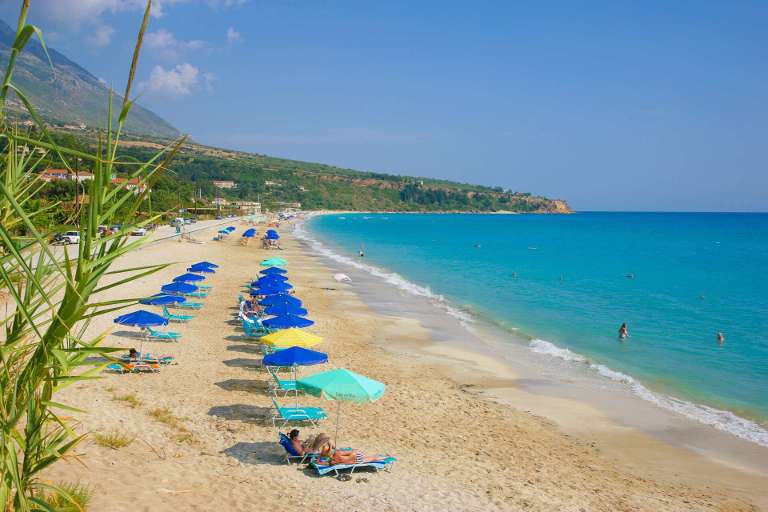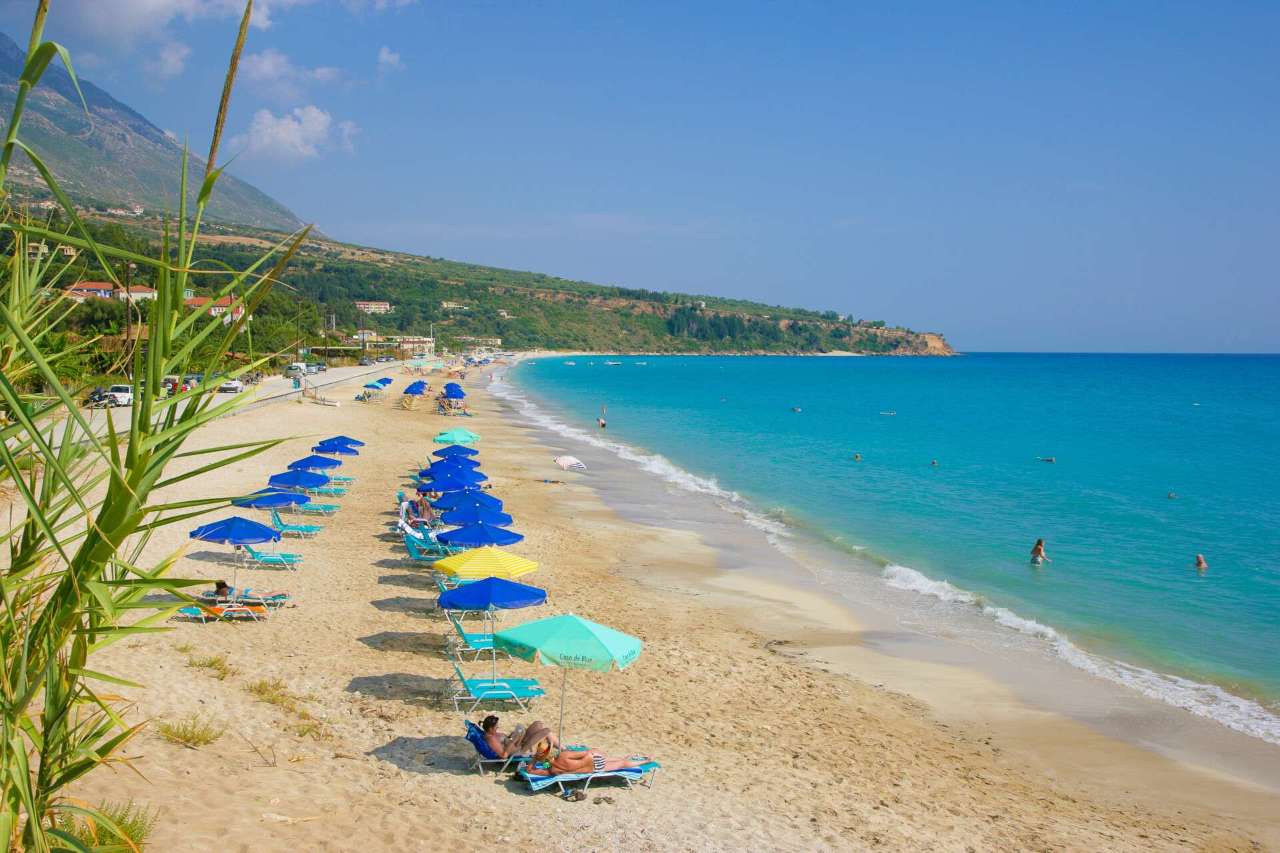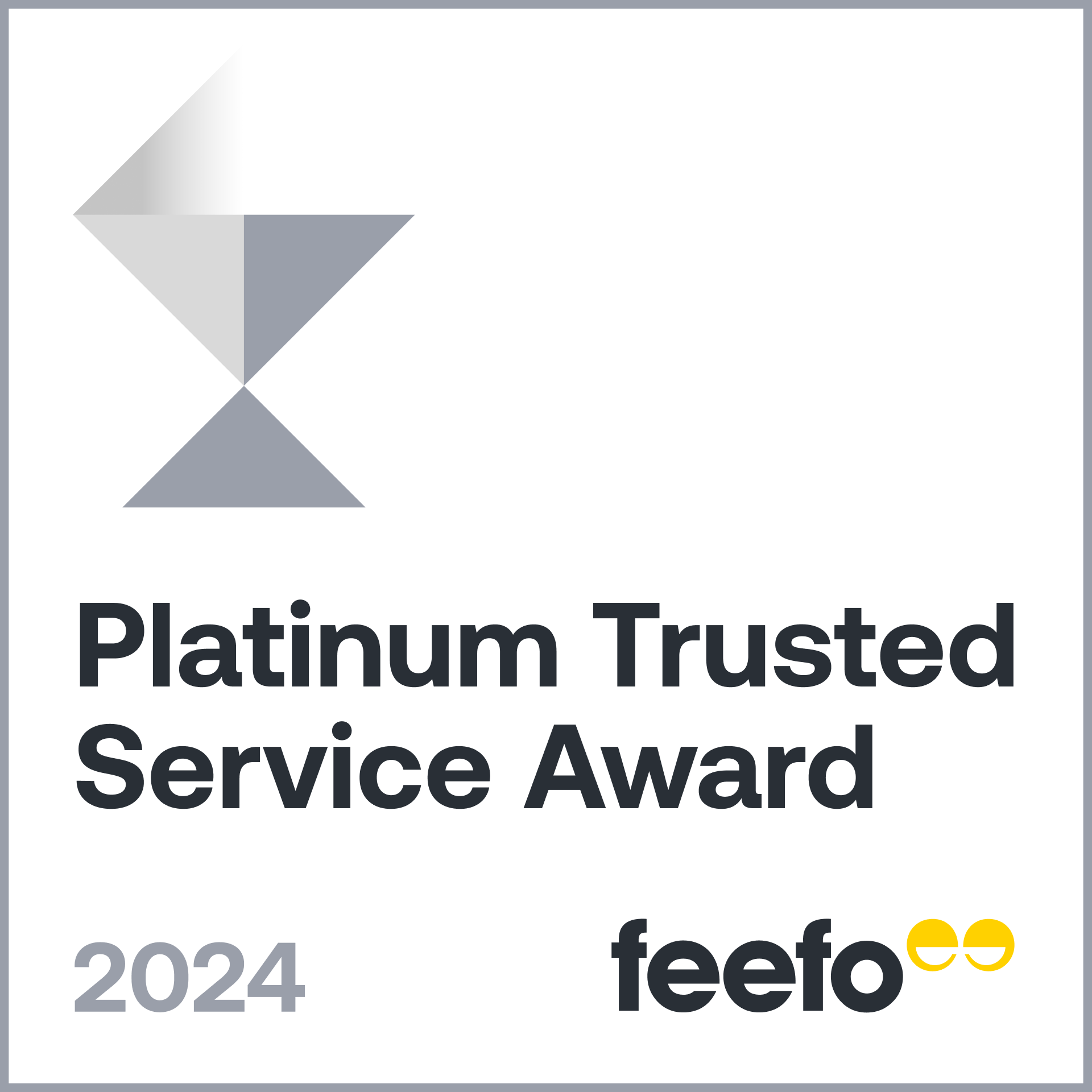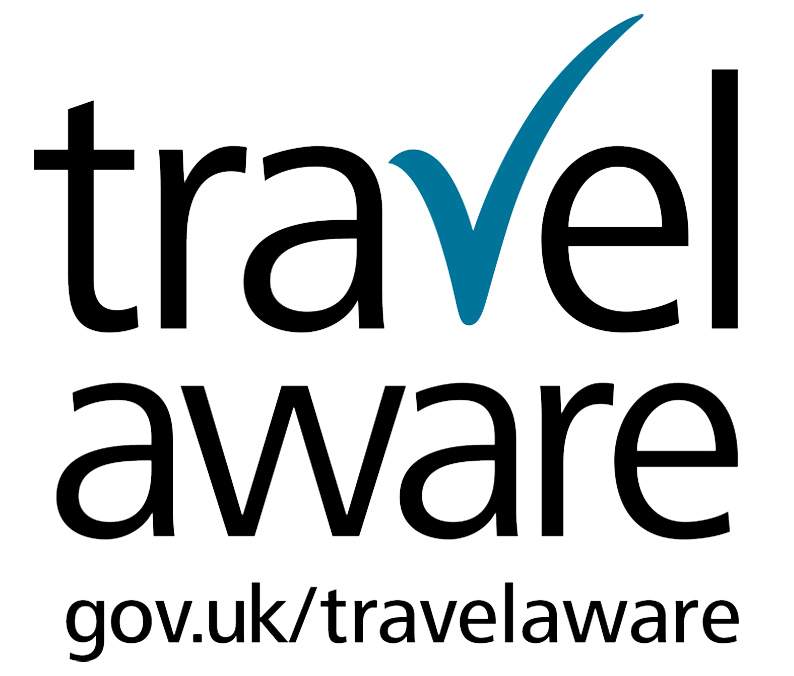Welcome to Kefalonia
 Kefalonia is an island of dramatic mountains, thickly forested hillsides, pale golden beaches and a cobalt coloured sea. Covered by pine forest and carpeted with wild sage, oregano, thyme and rosemary, the entire island is surrounded by fantastic shorelines that sweep down from secret coves with white pebbles in the north, discovered by boat or on foot, to golden sands in the south, that slope gently into the warm, sparkling sea.
Kefalonia is an island of dramatic mountains, thickly forested hillsides, pale golden beaches and a cobalt coloured sea. Covered by pine forest and carpeted with wild sage, oregano, thyme and rosemary, the entire island is surrounded by fantastic shorelines that sweep down from secret coves with white pebbles in the north, discovered by boat or on foot, to golden sands in the south, that slope gently into the warm, sparkling sea.
TRAVELLING TO KEFALONIA
With Kefalonia being such a popular summer destination, there are plenty of flight options from all over the UK to take you away to this beautiful island. Follow this link to find out more information on airports and airlines that serve Kefalonia.
EXPLORE KEFALONIA
If you would like to get out and about and discover more of Kefalonia, here are a few places we would suggest you visit.
Drogorati Cave
3km out of the town of Sami in the direction of Argostoli you can see the cave of Drogorati. The atmosphere is magical with stalagmites, stalactites, marvellous acoustics and a huge hall – a unique geological phenomenon.
The Cave of Ayios Gerasimos
Just 3km to the east of Argostoli, in Lassi, you can visit one of the caves of Ayios Gerasimos, the island’s patron saint. According to tradition, Saint Gerasimos was born in Trikala of Korinthia, and was a member of the famous Notaras family. He became a monk and spent 12 years in the Holy Land, then five years on Zakynthos. In 1560 he took possession of the cave in Lassi and stayed there until he founded his monastery in the Omala valley. He died on 15th August 1579.Two years later his relics were placed inside the church that was built over the cave. There is a trapdoor at the back of the church leading down to the cave.
Did you know?…..
The picturesque village of Kourkoumelata is well worth a visit. Devastated in the 1953 earthquake it was completely rebuilt through the generosity of a wealthy local family. The pride of village inhabitants lives on to this day; clearly demonstrated by smartly kept houses, beautifully tended gardens and clean public spaces.
Melissani Lake
Melissani Lake is situated near to Karavomylos. This underground lake was discovered in 1951 by the cave expert Giannis Petroheilos, who dated it to the early Hellenistic period. During a severe earthquake 500 years ago a large piece of the roof collapsed, leading to the discovery. The way the light falls through the roof onto the rocks and the surface of the lake below gives the reflections of the water green and blue hues. It is possible to visit several parts of the cave by boat, where you can admire the stalactites hanging from the walls. The cave was the place of worship of the god Pan and nymph Melissanthi.
Find out more about the magical Melissani Lake here.

Interesting archaeological discoveries include the altar of the god, an idol made of clay, and a figure of a woman. According to myth, the nymph Melissanthi (after whom the lake may have been named) committed suicide in the lake, because Pan did not return her love. The petrified dolphins hanging from the walls are connected to the myth, since they were supposed to send the nymph’s messages to the god. Another story behind the name of the lake is that it was a very famous place for bees nesting, the Greek word for bees being ‘melissa’.
Turtle Rescue Fund
The Kefalonia locals are extremely proud of the fact that the ‘caretta caretta’ turtles continue to use these unspoilt beaches in the south of the island to lay their eggs. As one would hope and expect, these beaches are protected and supervised to ensure that the eggs are not disturbed by the invasion of sun umbrellas and beach barbecues that can often be found on such stunningly beautiful beaches. Rabia is located just 20 minute drive from Mounda Bay where the turtles hatch their eggs.

Did you know?…..
The horses of Ainos are direct descendants of the Greek horses of Alexander the Great! Abandoned into the wild, they are one of the few truly wild species left in the world today. They are found around the monastery of Zoodochos where the only spring on Mount Ainos provides a water source.
Mount Ainos
The highest mountain of Kefalonia, Mount Ainos is densely wooded with the Kefalonian fir, which is unique to the island. In 1962 Ainos Forest (with a total size of 28,620 square metres) was declared a National Park. The park, the smallest of ten national parks in Greece, is located in the north-east part of the island and reaches 1,628 metres at its highest point. The top of the mountain offers a spectacular view of the neighbouring islands of Ithaca, Lefkas, Zakynthos and, weather permitting, the Peloponnese on mainland Greece. This area is also a place of archaeological interest, since an altar of Zeus was discovered there.
You can drive to the gates of Mount Ainos National Park, and then hike to the peak for a picnic. Despite being the third highest mountain in Greece, this is an easy climb with a comfortable track and lots of footpaths which are in good condition thanks to the shepherds who walk with their flocks over the mountain. It takes about three hours to make the ascent but it is well worth the effort for the fabulous views over the whole island on a clear day, as well as the chance of spotting some of the 20 or so wild horses that roam the countryside here.
BEACHES IN KEFALONIA
Kefalonia is blessed with many attractive beaches, and with a car most are accessible. The small shingle beaches to the north and the wide sandy beaches to the south are scattered around the local coastline and provide pleasant spots to relax and soak up the sun. The following is by no means an exhaustive list, and part of the fun is getting out and about and discovering your own favourite. See below for a few of our favourites around the island.
Foki Bay
From Tselentata the beach is 1.5km away, on the road to Fiscardo. This delightful pebble bay is great for snorkelling.
Embilisi
Embilisi Beach is 3km away from Tselentata village, on the road from Fiscardo to Antipata. It is a pebble bay with a taverna on the road down to the beach. Our very popular property Ruggero is within walking distance of this simply idyllic bay.

Did you know?…..
There are over one million olive trees on Kefalonia, covering almost 55% of the island’s area. Olive oil is very important to the island’s local, rural economy.

Agia Jerusalem & Alaties
From Maganos village, take the turning for Tzamarelata (next to the taverna). Continue downhill until reaching a fork in the road. The left fork leads to Agia Jerusalem and the right to Alaties. Both are small local beaches of pebble/ shingle. Melanthi is just a short drive from both of these delightful beaches.
Antisamos
Antisamos Beach is famous thanks to its association with the film Captain Corelli’s Mandolin. A beautiful beach and well worth a visit.
Skala
This beach can be very popular in high season, but its length and breadth mean there are quieter areas as well as organised zones with umbrellas and sun loungers. It offers a good choice of water sports, with water skiing, ringos and banana rides available. View our villas in Skala.
Myrtos
You may recognise Myrtos Beach, as it is the most photographed beach on Kefalonia, and understandably so. The white pebble and shingle beach is dramatically positioned at the base of the chalk cliffs on the Erissos Peninsula. The beach is designated safe for children, but as the gradient into the sea is steep, combined with large waves and undercurrents, great care should be taken when swimming.

ACTIVE KEFALONIA
A wide variety of sports and activities await that you can dip into when you choose.
Cycling in Kefalonia
Did you know?…..
50% of Greek bird species favour the Mount Ainos habitat, and birdwatchers might spot raptors such as buzzards and owls, various types of falcon and maybe even the rare Griffon vulture.
The north of the island is really quite hilly so be prepared if you are planning to cycle there. The roads on Kefalonia can be undulating though and full of potholes, so take care. The south-east has many cycling possibilities. The coastal area around Skala and Katelios is fairly flat and there is much of interest to explore in the immediate area around the resorts. Mountain bike hire is available in Skala.
In addition to Skala, there are two other great areas for cyclists on Kefalonia. The Livathos region in the south-west of Kefalonia, just east of the resort of Lassi, is perfect for cycling as it is fairly flat with lots of minor back roads and tracks. This region is the lushest on Kefalonia with abundant wildlife and lots of cool olive groves to cycle through, and a network of quiet roads linking pretty villages and several beaches you can stop at too.
Kayaking in Kefalonia
See a side of Kefalonia that land-bound visitors could never imagine.
One popular trip begins at Agios Kiriaki bay on the Lixouri Peninsula; from the open sea it takes seven hours of paddling, exploring sea caves and pausing at deserted beaches to rest before tucking into packed lunches.
Find our guide to three of the greatest activities on Kefalonia.
MYTHOLOGY IN KEFALONIA
According to the first version Kefalonia was named after Kefalos, grandson of Aeolos, King of the Winds. Legend has it that Kefalos and his wife, a mortal called Prokris – who was beautiful, humble and faithful – lived in a fantastic stone dwelling on the summit of Mount Ainos. Mount Ainos was so big that the sun did not shine on the top of the mountain very often, as it was mostly covered by clouds. As a result, the mountain was full of wildlife, especially wild horses that Prokris would frequently ride through the mass of beautiful silver pine trees that grow so well. Kefalos would hunt very early in the mornings, before Aurora (the goddess of dawn) had risen. He would always return before the sun rose and when he arrived home he would embrace his beloved new bride and tell her all his stories from the hunt that morning.
Did you know?…..
Local legend has it that the village of Markantonata, near Fiscardo, was so named because Marcus Antonius and Cleopatra once stayed there. Today Markantonata is indeed a beautiful and romantic place- ideal for a tryst between a Roman general and an Egyptian queen!
One morning when Kefalos was out hunting amongst the pine trees, his hunt was not going well so he stayed out longer than normal. When he looked up at the sky and noticed that the sun was beginning to rise, he rushed home empty-handed. By the time he reached home, Aurora had already arrived and it was broad daylight. Aurora spotted him and immediately fell in love.

From this moment on, Aurora would appear earlier and earlier on the horizon in order to make Kefalos fall in love with her. Unfortunately for Aurora, this was not successful and she became increasingly impatient and jealous watching the love blossom between Kefalos and his beautiful wife. So she tried to separate them by speaking to Kefalos one day and making him doubt the loyalty and devotion of his wife. To test her loyalty, Kefalos went to his wife one day wearing a disguise and bearing gifts to try to seduce her. Prokris gave in to Kefalos and when she realised who he really was, she hated him so much for deceiving her that she left him immediately.
Prokris left Kefalonia and, after spending some time in Crete, she returned to Athens where the goddess Diana agreed to help her win back her husband. Unfortunately however, while hunting, Kefalos saw the movement of Prokris behind pine trees and mistaking her for prey, he killed her.
According to another legend, the island was named after Kefalines of Kefalanes, a nation in western Greece. Many historians claim that the Kefalines were Odysseus’s people, hence his kingdom was on Kefalonia.
Described in yet another legend is Amphitryon, King of Thebes, who was helped by the Athenian, Kefalos, to oust the native Taphians. In gratitude, Amphitryon made a gift of the island to Kefalos, from whom it gained the name Kefalonia.

SOUVENIR SHOPPING
Greeks are known for their excellent handicrafts. Good buys include lace, jewellery, ceramics, knitwear, rugs, leather goods, local wines and spirits.
Did you know?…..
Most of the indigenous people of Kefalonia have surnames ending in -atos, and almost every community on the island has a name ending in -ata, such as Valsamata, Frangata, Lourdata and others.
Another quality local product is embroidered linen and crochet work. You will also see vendors on the side of the road selling home- made wine and honey, as well as the traditional tiny ‘pantopeleons,’ the local grocery stores that seem to have every Greek speciality crammed into them… so just go ahead and ask!
Skala, Poros and all the tiny villages usually have plenty of mini markets that sell the essentials, but for gifts and keepsakes Argostoli and Fiscardo have a wider selection of shops to browse.
Popular buys are Robola or Calliga wines, bottles of the aniseed flavoured liquor Ouzo, quince paste, pralines (mandoles) and the Kefalonian honey known as Golden Honey. You will also find shops selling jewellery, English books and general souvenirs.

Alternatively, Fiscardo is worth exploring for an afternoon, with some very pretty shops on the harbour front and amongst the back streets selling a range of ceramics, jewellery and clothes. View our villas in Fiscardo.
WINE
“... and when Kephalos settled on the island at the end of his travels, he brought with him the vine, that plant that is blessed by Dionysos, and thus won over the land, the heart and the soul of the Cephalonians.”
The Grapes of Hanaan by Albert Mousson, Corfu and Cephalonia – A Tour in 1858
The only Ionian island to have been granted ‘Appellation of Origin’ for its wines, Kefalonia boasts three: Robola of Kefalonia, Muscat of Kefalonia, Mavrodaphne of Kefalonia.
The Robola zone covers a high- attitude, limestone area in the centre of the island in the area of the village of Omala and the Monastery of Saint Gerasimos. The Muscat and Mavrodaphne zones are both located on the Paliki Peninsula with a small amount of Mavrodaphne grown in other areas of Kefalonia. The main difference in the appellation zones is that whereas Robola is almost exclusively grown at high altitudes, Muscat and Mavrodaphne can also be found quite close to sea level.
There are also three zones for regional wines, or Vins de Pays; these are the Slopes of Ainos (Plaghies Ainou) in the Omala Valley (white and red wines), Metaxaton in Livatho (red) and Mantzavinaton on the Paliki Peninsula (white, rosé and red). These zones produce high quality wines of differing varieties.
Check out our guide to The Robola Wine Festival which is based in Kefalonia.















